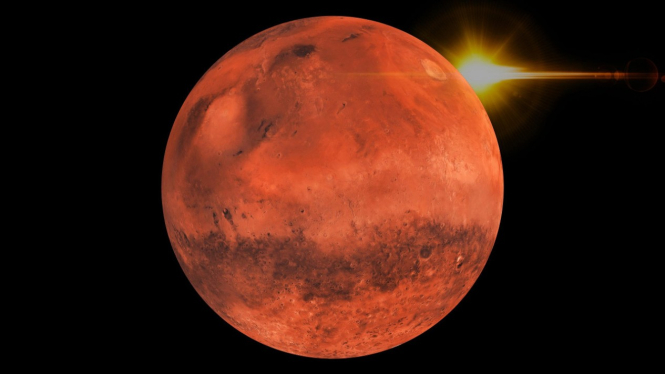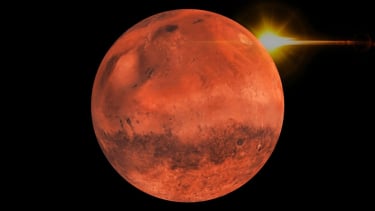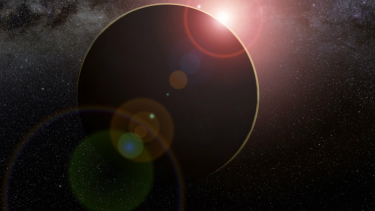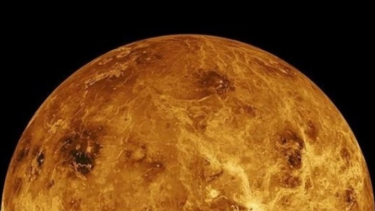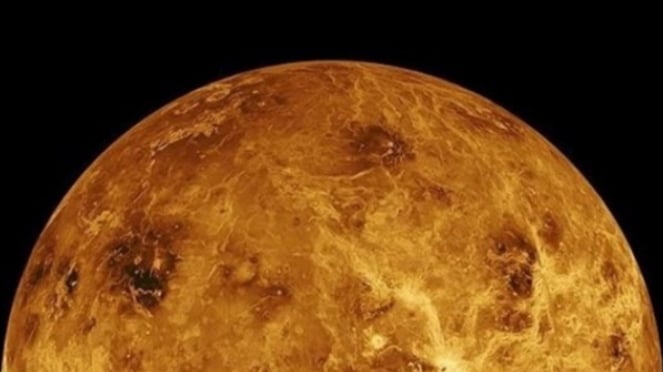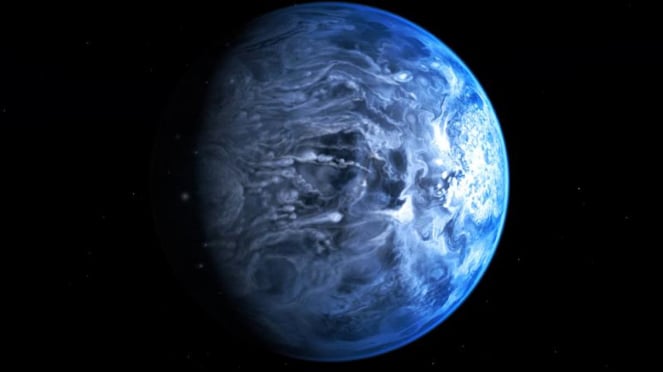10 Dangerous Planet in the Universe
- SciTechDaily
VIVA – The universe is not a friendly place for us humans. We know that if we leave the safety of Earth, there will be all kinds of harsh conditions out there trying to kill us. Some could become habitable if we figure out the answers to a few problems, like the unavailability of oxygen and water. Others would still be unsuitable for human life.
These dangerous planets are ready to kill any creature that strays too close or tries to develop on them. Most of the planets on this list are not just too hot or cold. They have more terrible conditions that will never support life.
1. Proksima b
Planet Proxima b
- www.phl.upr.edu
First there is Proxima b. This planet looked promising when it was discovered. It orbits Proxima Centauri, a red dwarf 4.24 light-years from Earth. The exoplanet attracts astronomers who think it has water and Earth-like properties.
But apparently, Proxima b is so close to Proxima Centauri that the exoplanet completes its orbit in 11.2 days. It is also tidally locked, leaving one side very hot and the other very cold and frozen.
Unlike some of the other planets on this list, Proxima b does have a rocky surface, however, it is tidally locked to its star. This means that just like the Moon, only one side of it faces its star all the time. This makes half of Proxima b extremely hot, and the other side extremely cold.
2. Venus
Venus.
- Pixabay
Venus is our other neighbor besides Mars. Because of this, one wouldn’t expect it to be so different from Earth, but the fact that it has such harsh conditions tells us a lot about the habitable zones in star systems.
A little bit of distance (little on an astronomical scale) can make a huge difference in the conditions of a planet.
The surface of Venus is filled with volcanoes that emit large amounts of heat and carbon dioxide. The large deposit of carbon dioxide makes Venus poisonous for humans. The thick clouds also trap heat and gas, making the planet lethally hot. Temperatures reach a hostile 467 degrees Celsius (872 °F).
Venus isn’t only extremely hot because of its closeness to the Sun. It is also full of active volcanoes. Because it has a thick atmosphere, the heat and carbon dioxide get trapped within the planet, creating a cycle that raises the temperatures.
Researchers think that Venus would be similar to Mercury if Venus did not have these clouds. The high temperatures on the planet also mean that the rain never hits the ground. Instead, it evaporated halfway to form another cloud.
3. OGLE-TR-56b
Ogle TR 56b
Planet OGLE-TR-56b lies in the Sagittarius constellation 5,000 light-years away from Earth. Hot Jupiters are often formed farther out in their stellar systems and later move closer to their stars.
Planet OGLE-TR-56b has already moved too close to its own star. It’s so near that a year is 29 hours long, and the exoplanet’s surface temperature reaches 2,000 kelvins.Over there, the clouds are not made of water but of vaporized iron. Rain falls to the ground as hot liquid iron.
4. TrES-2b
TrES-2b is the darkest planet out there. It is so black that the coals will appear lighter if they are placed side by side. The planet's atmosphere absorbs more than 99 percent of the light it receives from the sun.
Astronomers believe that the exoplanet reflects so little light because its atmosphere is filled with vaporized sodium and potassium or gaseous titanium oxide.
Nevertheless, being black does not mean that the exoplanet is cool. In fact, its atmospheric temperatures reach over 980 degrees Celsius (1,800 °F).
This extremely high temperature causes some parts of the exoplanet to emit a red glow, just like burning coal or electric stove coils. Astronomers also suspect that the exoplanet is so close to its star that both are tidally locked.
5. OGLE-2005-BLG-390Lb
OGLE-2005-BLG-390Lb is a rocky exoplanet with a very thin atmosphere located right in the middle of our own Milky Way. All three factors made astronomers suspect that it could contain life when it was discovered. However, they now believe that it does not due to the exoplanet’s super-low temperature
It is located in the direction of the Sagittarius constellation and is about 4,800 light-years away from Earth.
On this planet, you get all the fun of toxic gases, and extreme winds of a gas planet combined with the high temperatures of Mercury or Venus. What you get is a planet where it literally rains liquid, melting iron.
6. Upsilon Andromeda b
Upsilon Andromedae b is one strange exoplanet that rotates around the star Upsilon Andromedae A, which is 44 light-years away from Earth. The exoplanet is too close to its sun, completing an orbit in just 4.6 days
Here's a theory about the planet Upsilon Andromeda b:
The heat from the star Upsilon Andromedae hits the side of exoplanet Upsilon Andromedae b that is facing the sun, causing the air to heat up. When that air becomes hot enough, the wind transports it to the opposite end of the exoplanet.
At the same time, the wind transports the cooler air at the opposite end to the side facing the sun. Then the process continues. The continuous switch means that the side shielded from the sun has a reliable flow of hot air while the side facing the sun has much cooler air
7. WASP-121b
WASP-121b is one weird exoplanet. To begin, it is not spherical but looks more like a football. The shape is not what makes WASP-121b deadly.
Instead, the problem is the exoplanet’s nearness to its star. WASP-121b is so close to its star that temperatures hover around 2,540 degrees Celsius (4,600 °F). Solid or liquid objects cannot form there, and everything just remains in a gaseous state.
This includes its metallic atmosphere, which is filled with iron and magnesium gases. Worse, the exoplanet is losing this atmosphere to its star, just like KELT-9b.
Curiously, the closeness to its star is the same reason that WASP-121b is stretching out of shape. The star is able to exert a heavy gravitational pull on the exoplanet. WASP-121b cannot resist the pull because it has a weak gravitational force. It manages to partly resist, though, causing it to bend out of shape
8. KELT-9b
KELT-9b is the hottest planet we have ever found. The temperature of its star is around 9,700 degrees Celsius (17,500 °F), which is almost two times the 5,480-degree-Celsius (9,900 °F) surface temperature of our Sun.
The daytime temperature on the exoplanet hovers around 4,300 degrees Celsius (7,800 °F), which is still insanely hot. Most stars in the universe do not even come close.
Astronomers believe that exoplanet KELT-9b will lose its entire atmosphere to star KELT-9 in just 200 Earth years.
9. CoRoT-7b
In February 2009, astronomers operating the Convection, Rotation and Planetary Transits (CoRoT) satellite discovered a new exoplanet in the Monoceros constellation 480 light-years away from Earth. They called it CoRoT-7b.
CoRoT-7b is rocky, despite having a rocky surface that could support life, CoRoT-7b is not the place to be.
For starters, its atmosphere is filled with minerals that form rock clouds. These clouds send pebbles and small rocks falling from the skies as if they were rain. Even if humans managed to survive that, they would be destroyed by the insanely hot surface temperature of the exoplanet.
Our own Earth is 60 times farther from our Sun than CoRoT-7b is from its star. In the daytime, the star in the skies of CoRoT-7b appears 360 times bigger than our own Sun looks from here on Earth.
10. HD 189733b
Ilustrasi planet HD 189733b, berwarna biru mirip Bumi
- sci-news.com
In 2005, astronomers discovered a Jupiter-sized exoplanet, HD 189733b, with a distinctive Earthlike blue tint 63 light-years away. However, unlike Earth, HD 189733b was not blue because of its seas and oceans. Instead, the color came from its silicate-rich clouds.
HD 189733b is also dangerous. The first problem is the 8,700-kilometer-per-hour (5,400 mph) winds that blow across the exoplanet. That is seven times the speed of sound, which is insanely fast. For comparison, peak sustained winds of the notorious Hurricane Katrina blew at 280 kilometers per hour (175 mph).
Then there is the rain. The silicate-rich clouds of HD 189733b cause rain of molten glass to fall from the skies. That rain does not fall straight down because of the superfast winds we just talked about. Instead, this strange precipitation falls sideways.
HD 189733b is so close to its star that it is ridiculously hot.
For better perspective, it is so near to its sun that HD 189733b completes a revolution around its star in just 2.2 Earth days. Interestingly, a day on this exoplanet is also 2.2 Earth days long.


